Supermicro X12SDV-10C-SPT4F Management
This is one of Supermicro’s X12 generation platforms. As such, it is using the newer ASPEED AST2600 BMC.
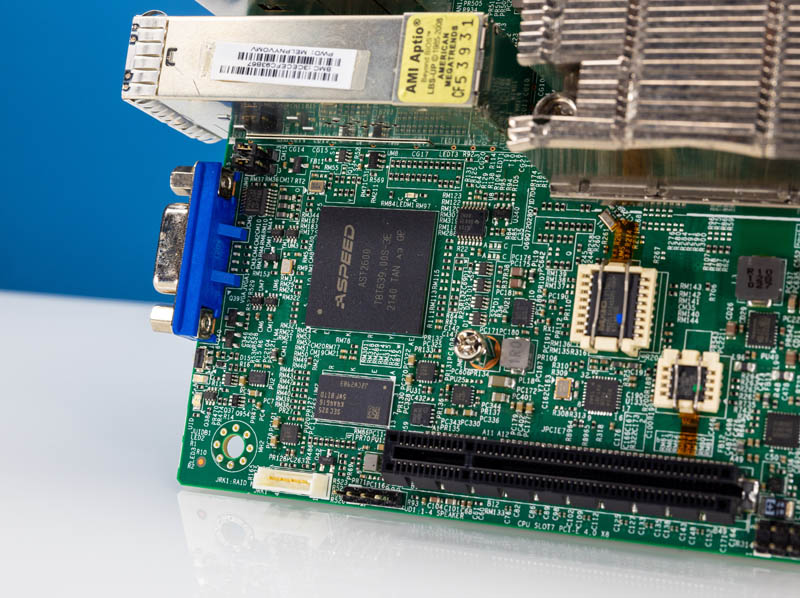
That means we get an updated Supermicro IPMI management interface (and Redfish API) solution versus what we saw on the X10SDV or X11SDV platforms.
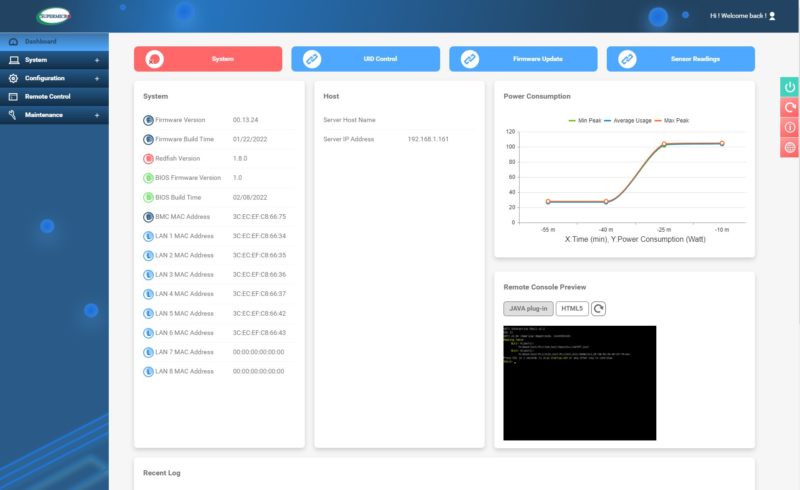
That includes features like HTML5 iKVM functionality included.
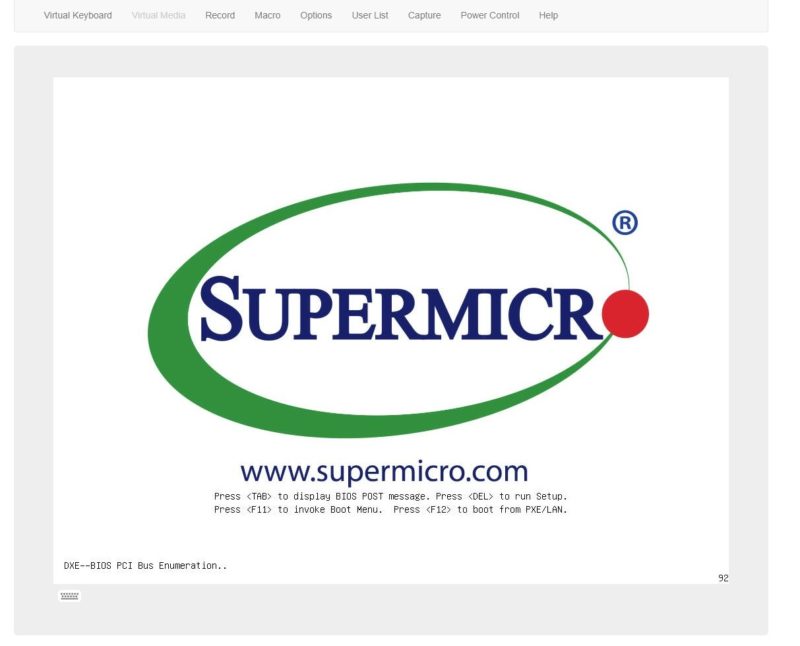
One change that we highlighted recently is that with the HTML5 iKVM, one now needs a license to remote mount media directly when using this solution. We discuss other ways to mount media in the new era of Supermicro management in How to Add Virtual Media to a Supermicro Server via HTML5 iKVM Web IPMI Interface.
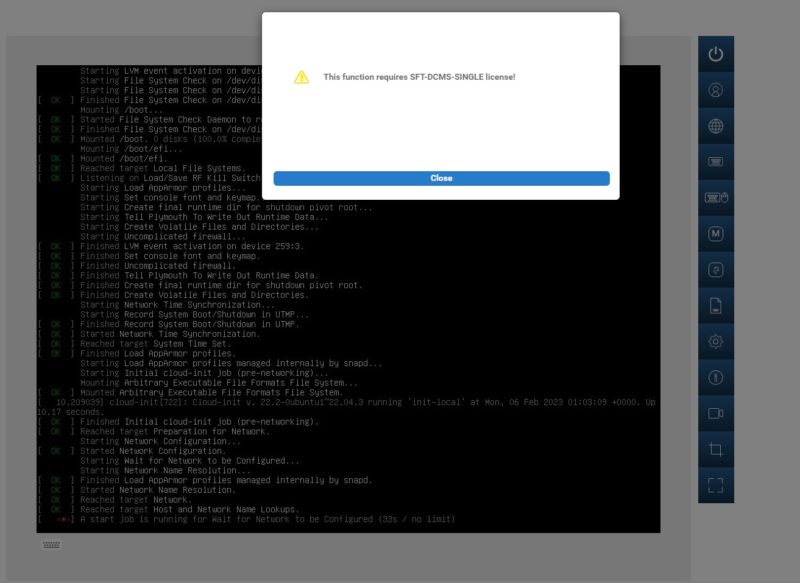
Aside from what is on the motherboard, Supermicro has a number of other tools to help manage its platforms.
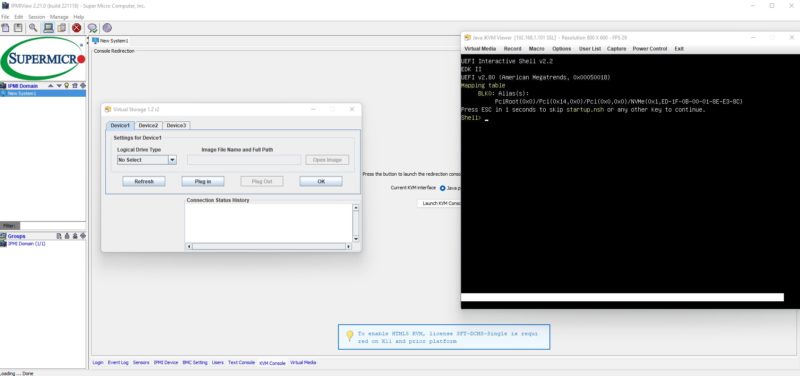
If you recall the photo with the unique BMC password sticker on the SFP28 port, this is mandated due to new laws that went into effect a few years ago.

You can learn more about why this is required so the old ADMIN/ ADMIN credentials will not work in Why Your Favorite Default Passwords Are Changing.
Next, let us get to the performance.
Intel Xeon D-1749NT Performance
First, since many will not have seen it yet, here is the lscpu output for the Intel Xeon D-1749NT. This is an Ice Lake-D chip so its capabilities will closely match other Ice Lake parts like the 3rd Generation Intel Xeon processor line, codenamed “Ice Lake”. That is by design. Intel wants to ensure that it has parity between data center and edge platforms.
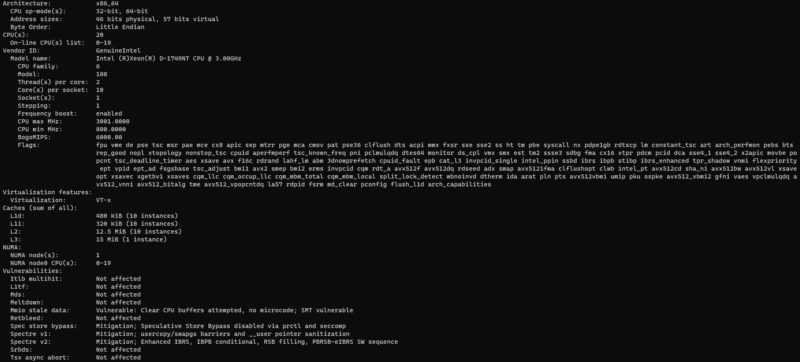
This part has Intel QuickAssist. That is a feature many of our readers may want. If you want to learn more about Intel QAT and the Ice Lake-D series, see our Intel Xeon D-2700 Onboard QuickAssist QAT Acceleration Deep-Dive.
We are instead going to focus on a few benchmarks that tie to our older results.
Python Linux 4.4.2 Kernel Compile Benchmark
This is one of the most requested benchmarks for STH over the past few years. The task was simple, we have a standard configuration file, the Linux 4.4.2 kernel from kernel.org, and make the standard auto-generated configuration utilizing every thread in the system. We are expressing results in terms of compiles per hour to make the results easier to read:
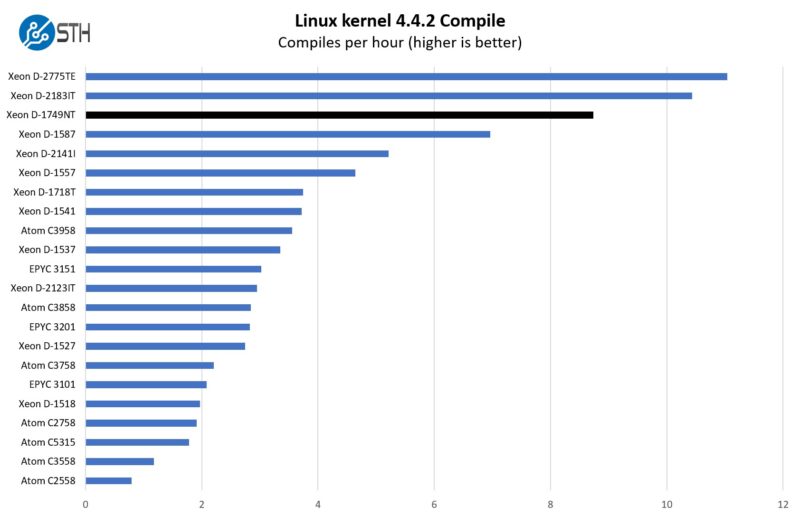
This is something we are going to see often in this review. The new parts bolstered by higher TDP and a newer microarchitecture will perform well. In this case, the generational leap means that the 10-core Intel Xeon D-1749NT now outperforms the 16-core Intel Xeon D-1587.
7-zip Compression Performance
7-zip is a widely used compression/ decompression program that works cross-platform. We started using the program during our early days with Windows testing. It is now part of Linux-Bench.
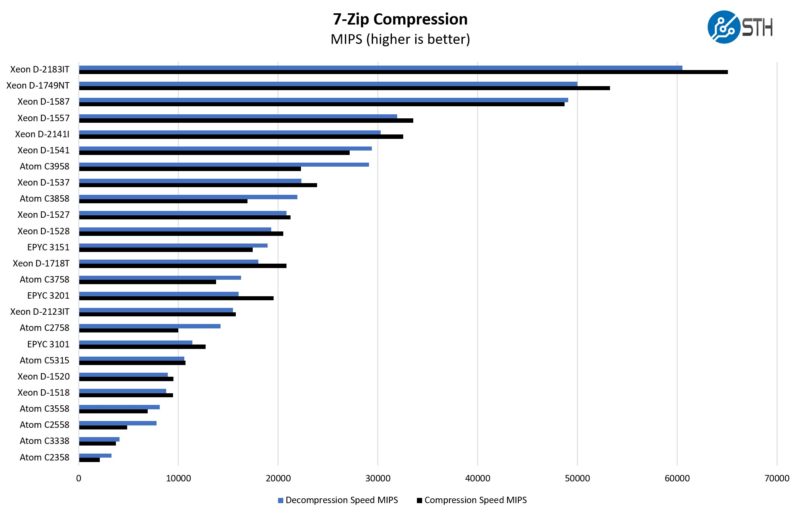
Again, we see that the new part is between the 16-core Xeon D-1587, and what is the higher-end quad channel memory Intel Xeon D-2183IT 16 core part. All of this with only 10 cores.
OpenSSL Performance
OpenSSL is widely used to secure communications between servers. This is an important protocol in many server stacks. We first look at our sign tests:
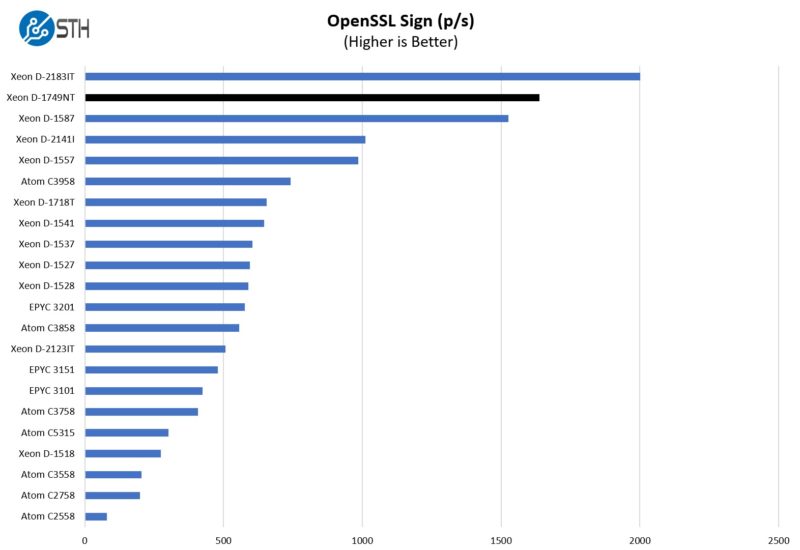
Here are the verify results:
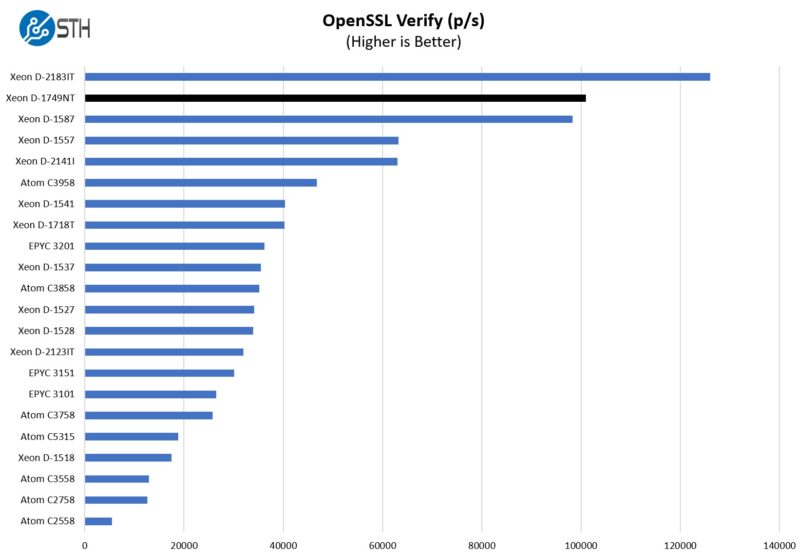
Again, the new chip performs extremely well here. This is one where Intel is now pushing the concept of using QAT acceleration. So if you wanted faster OpenSSL or compression, Intel’s answer would be not to use the CPU cores and instead get a SKU like this with QAT onboard and use acceleration.
As a quick note, because this motherboard requires active chassis cooling, we are going to do our power consumption testing in a future fully-configured system review. Still, directionally this will use more power than the older Xeon D-1518/ D-1521 X10SDV platforms.
Next, let us get to the topology, the new Intel E823-L NIC, and our final words.




Excellent review, Thank you for posting it.
you mention in the article that the 1749NT does not feature Intel’s QAT but on its ark page it is listed as present. is this a mistake on Intel’s part ?
“Supermicro is using a two-channel and two DIMM per channel (1DPC) layout here”
I think y’all meant to say “Supermicro is using a two-channel and one DIMM per channel (1DPC) layout here”
Can’t wait to pickup one of these boards. Amazing review. Thank you .
I would really like to know if that X550-AT2 can run NBASE-T under PfSense.
You should provide geekbench single core and multicore scores so these type processors can be more easily compared to consumer processors. Plenty of your audience makes tough decisions between used enterprise and consumer grade for various parts of their home labs.
I’m curious if there’s any kind of aftermarket heatsink for these? I’d like to use one in an overkill tabletop NAS build and am concerned about proper airflow. They’re really the only mITX that ticks all my boxes – OOB IPMI on-board, 10+GB NICs on-board (SFP* cages a plus), high RAM capacity.
I don’t know of an aftermarket heat sink solution for these, but the mounts appear to be on ~80mm and ~50mm centers. Noctua (e.g.) uses an 80mm 2-point mount, so it might be possible to adapt one to this, but it’d be super tight with the Ice Lake-D’s narrow keep-out area. A down-firing model (with the heat pipes coming out one side only) might fit, and might block slots. VLP DIMMs might also help. I can see why they didn’t use an LGA 115x/1200/1700 -style keep-out and mount (size), but it sure would have been convenient.
Why would pfSense have trouble with the x550?
Isnt this mitx 17xx and the big brother a little bigger matx The one on 27xx series? That is The case IF I look at supermicro site (in my case i only have place for mitx )silverstone 380 i think
Man, what happened to the CPU heatsink? The fins in the middle inside are all crunched up.
Any guesses if TrueNas will pick up all the networking?